Instructions for Side by Side Printing
- Print the notecards
- Fold each page in half along the solid vertical line
- Cut out the notecards by cutting along each horizontal dotted line
- Optional: Glue, tape or staple the ends of each notecard together
Lab Practical: Epithelial Tissue
front 1 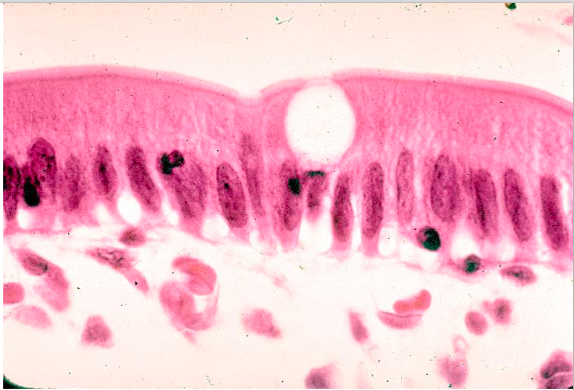 Identify the type of epithelial tissue State the function/location | back 1 Simple Columnar Epithelium A single layer of column-shaped cells, Found in the digestive tract and excretory ducts of some glands. Ciliated columnar cells line the fallopian tubes, bronchi, and spinal cord. Basal nuclei are oval in cross section |
front 2 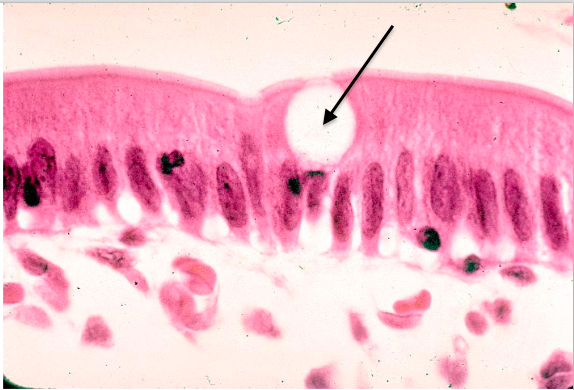 What is the arrow pointing to? | back 2 The Goblet cells which secrete mucus located in the simple columnar epithelium |
front 3 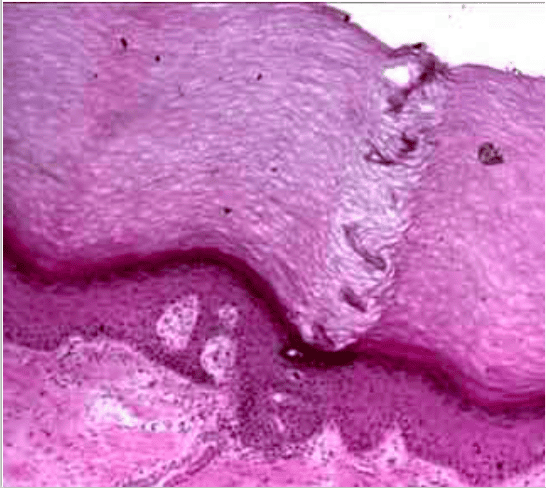 Identify the type of epithelial tissue State the function/location | back 3 Stratified Squamous Epithelial Found in the skin (epidermis) Found in the vaginal, oral, and anal canal (friction) |
front 4  What is the arrow pointing to? | back 4 Stratum Granolusum it produces keratin (H2O proof) and melanin (protects from sun) |
front 5 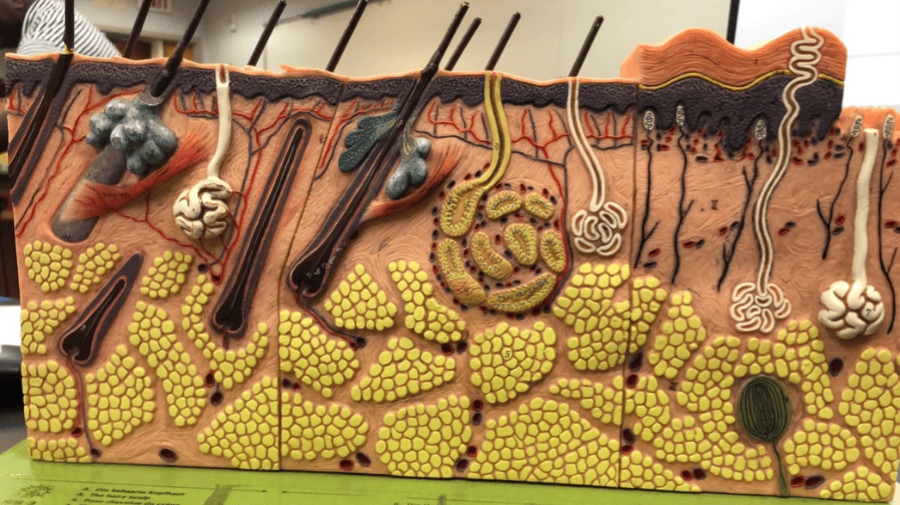 What are the general layers of the skin? | back 5 Epidermis: S. Corneum (Apical Surface) S. lucidum S. granulosum S. spinosum S. basale (Basal Surface) |
front 6 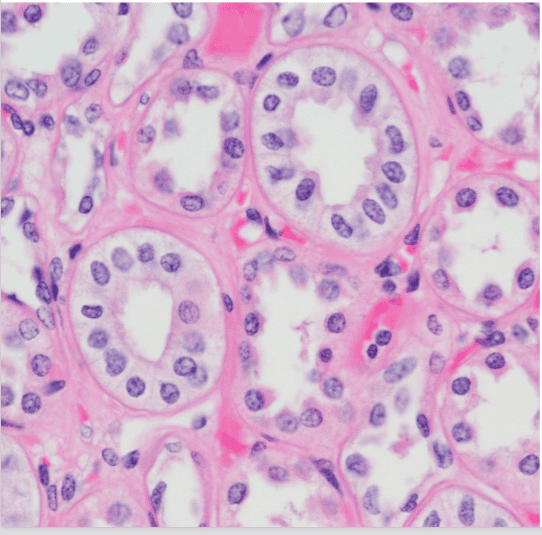 Identify epithelial tissue State location and function | back 6 Simple Cuboidal Tissue A single layer of cube-shaped cells, with central spherical nuclei. Found in Kidney Tubules, ducts of glands and surface of the ovary. Excretion and Secretion |
front 7 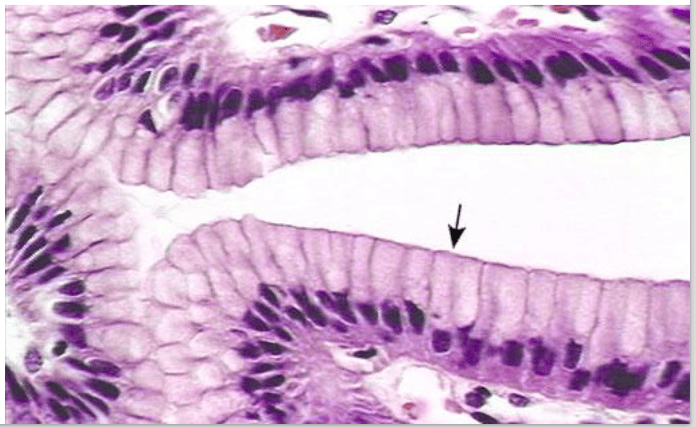 Identify epithelial tissue State location and function | back 7 Simple Columnar Epithelium. The arrow points to the apical surface Found in the GI tract |
front 8 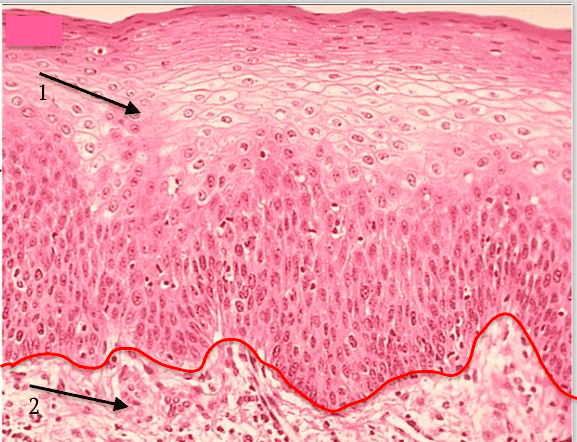 Identify the tissue Identify Arrow 1 & 2 Identify Red line | back 8 Stratified Squamous Arrow 1: Epithelial Tissue Arrow 2: Connective Tissue Redline: Basement Membrane Epithelial tissue lies on the Basement membrane and under is the Connective tissue. |
front 9 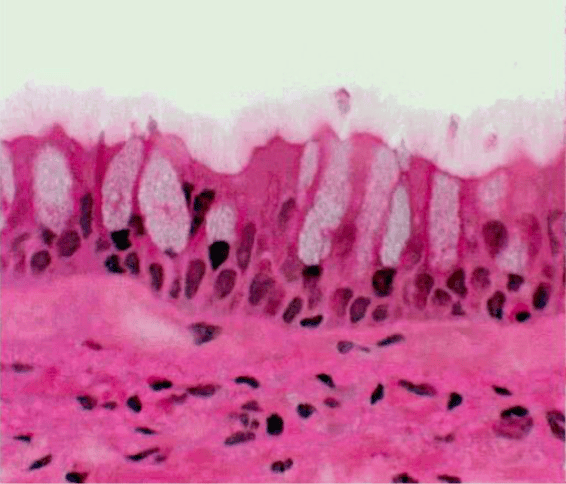 Identify epithelial tissue State location and function | back 9 Pseudostratified Columnar Epithelium Found in the trachea, the lining of the respiratory tract, and ducts of some glands Protects much of the respiratory system |
front 10 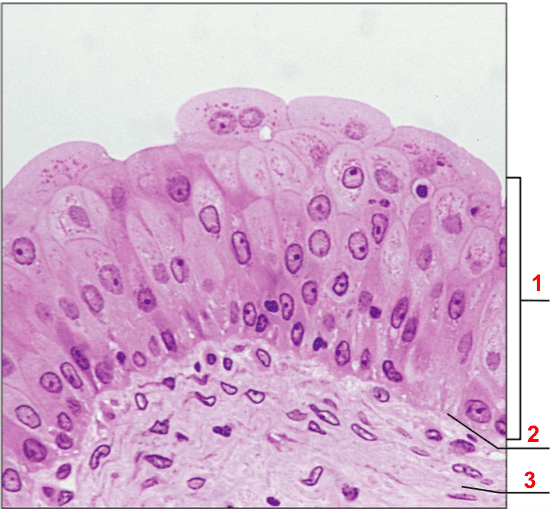 Identify epithelial tissue State location and function Identify # 1, 2, 3 | back 10 Transitional Epithelium Located in the urinary bladder Look like stratified squamous epi. when stretched and stratified cuboidal when relaxed. 1: Epithelial Tissue 2: Basement Membrane 3. Connective Tissue |
front 11 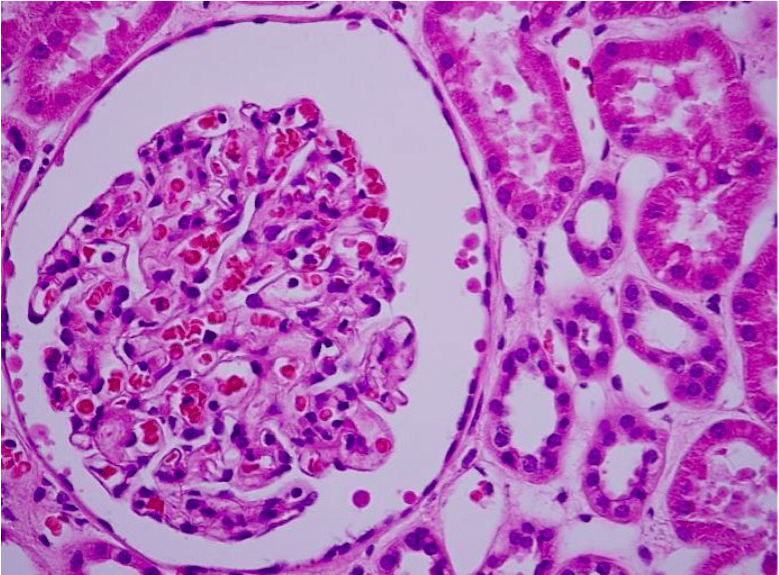 identify epithelial tissue State location and function | back 11 Simple Squamous Found in lungs and kidneys Function is: exchange of materials |
front 12 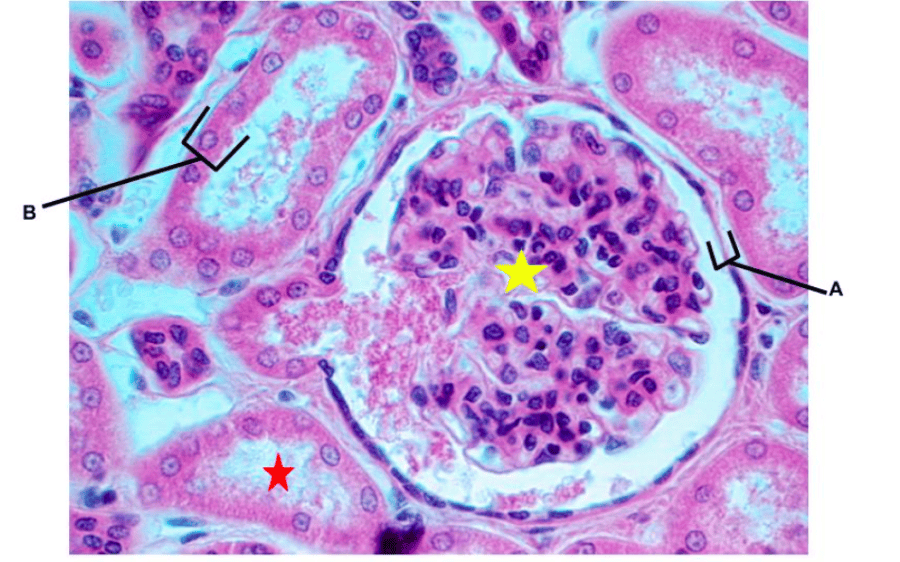 Identify the tissue indicated by the letter A. | back 12 Simple Squamous Epithelium |
front 13  Identify the structure that is also indicated by the letter A. | back 13 Glomerular Capsule |
front 14 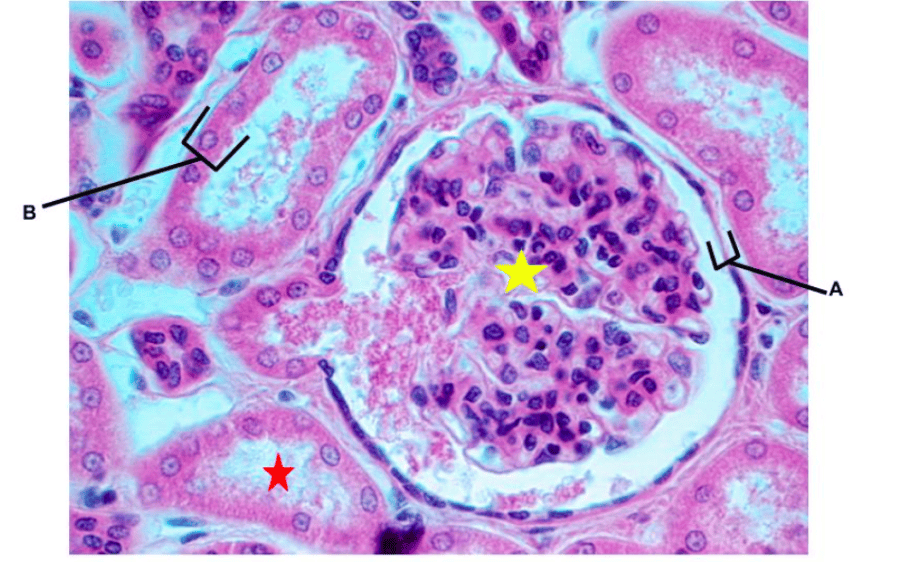 Identify the structure indicated by the yellow star | back 14 Glomerulus; bundles of capillaries surrounded by the glomerular capsule |
front 15  What occurs at the structure indicated by the yellow star | back 15 Filtration of blood |
front 16  Identify the tissue indicated by the letter B. | back 16 Simple Cuboidal Epithelium |
front 17  The red star is in the lumen of what structure? | back 17 Renal Tubule |
front 18  What liquid is found in the lumen indicated by the red star? | back 18 Filtrate |
front 19  What organ is this slide from? | back 19 Kidney |
front 20 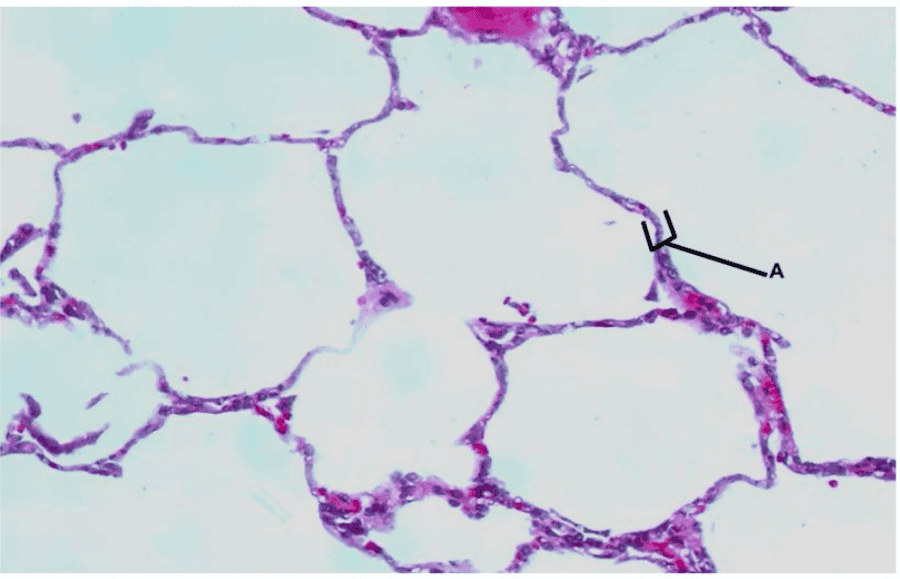 Identify the tissue indicated by the letter A. | back 20 Simple Squamous Epithelium |
front 21  identify the structure that is also indicated by the letter A. | back 21 Aveolus |
front 22  What organ is this slide from? | back 22 Lung |
front 23 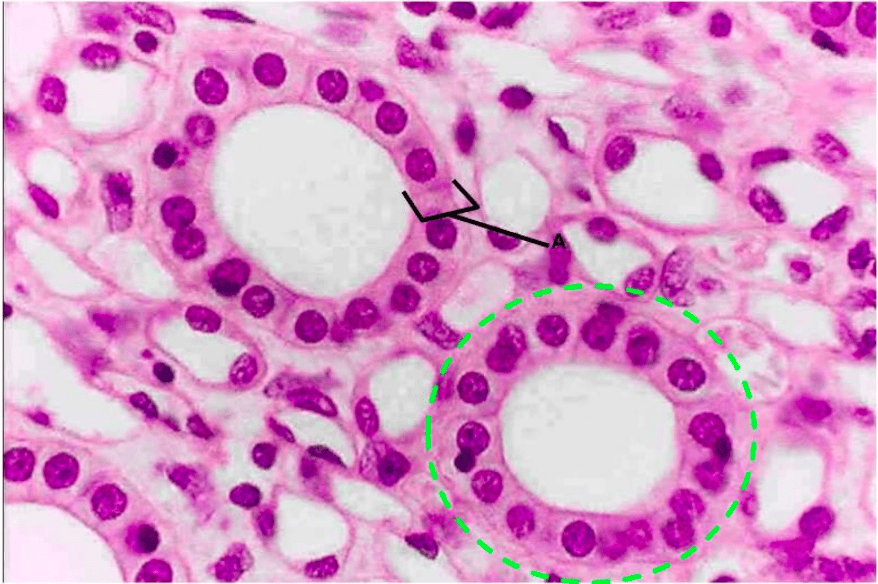 Identify the tissue indicated by the letter A. | back 23 Simple Cuboidal Epithelium |
front 24  What is the function of this tissue? | back 24 Absorption and Secretion |
front 25  Identify the structure indicated by the green ring. | back 25 Renal Tubule |
front 26  What organ is this slide | back 26 Kidney |
front 27 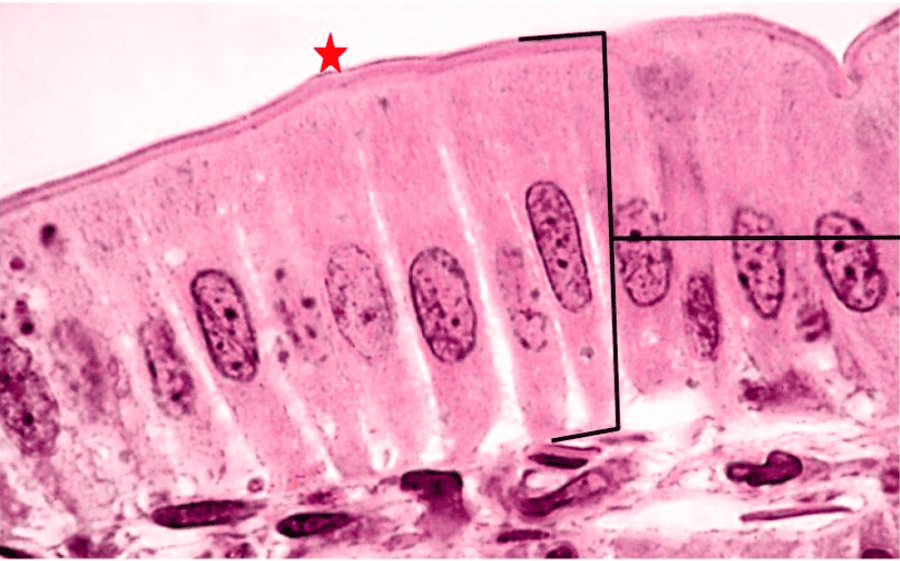 Identify the tissue indicated by the letter A. | back 27 Simple Columnar Epithelium |
front 28  What is the function of this tissue | back 28 Absorption & Secretion |
front 29  What accounts for the fuzziness adjacent to the red star? | back 29 Microvilli |
front 30  What is the function of the structure from the previous question? | back 30 Increase Surface Area for more secretion and absorption |
front 31  What would be found in the lumen indicated by the red star? | back 31 Chyme |
front 32  What organ is this slide from? | back 32 small intestine |
front 33 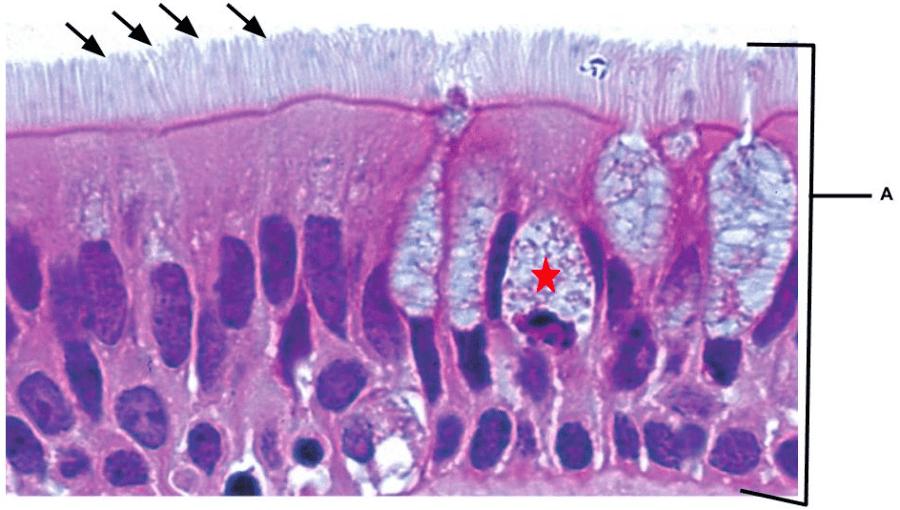 Identify the tissue type indicated by the letter A. | back 33 Pseudostratified Columnar Epithelium |
front 34  Do all the cells in this tissue type touch the basement membrane? | back 34 yes |
front 35  What specific structures are indicated by the black arrows? | back 35 Cilia |
front 36  What is their function? | back 36 upward sweeping of mucus |
front 37  identify the cell indicated by the red star. | back 37 Goblet cell |
front 38  What is the function of the cell indicated by the red star. | back 38 Secrete mucus |
front 39  What organ is this slide from? | back 39 Trachea |
front 40 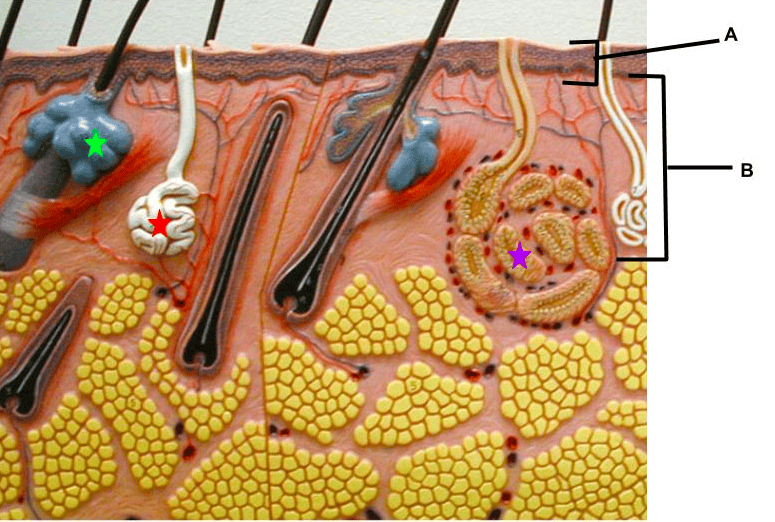 Identify the skin layer indicated by the letter A. | back 40 epidermis |
front 41  Identify the tissue indicated by the letter A. | back 41 stratified squamous epithelium |
front 42  Identify the skin layer indicated by the letter B. | back 42 Dermis |
front 43  Is this a model of thin skin or thick skin? | back 43 thin skin |
front 44  What specific structure is indicated by the green star? | back 44 Sebaceous gland |
front 45  What part of the skin lacks the structures indicated by the green star? | back 45 anterior hands and plantar surfaces (thick skin; palms and soles) |
front 46  What is the function of the structure indicated by the green star? | back 46 Secretion of sebum - a moisturizing oil |
front 47  Identify the specific structure indicated by the red star. | back 47 Merocrine sweat gland |
front 48  What is the function of the structure indicated by the red star. | back 48 Secrete sweat to lower body temperature |
front 49  Where are red star structures found? | back 49 all over the skin |
front 50  Identify the specific structure indicated by the purple star. | back 50 apocrine sweat gland |
front 51  What is the function of the structure indicated by the purple star? | back 51 none |
front 52  Where are purple star structures found? | back 52 Primarily axillary, pubic, and anal regions |
front 53 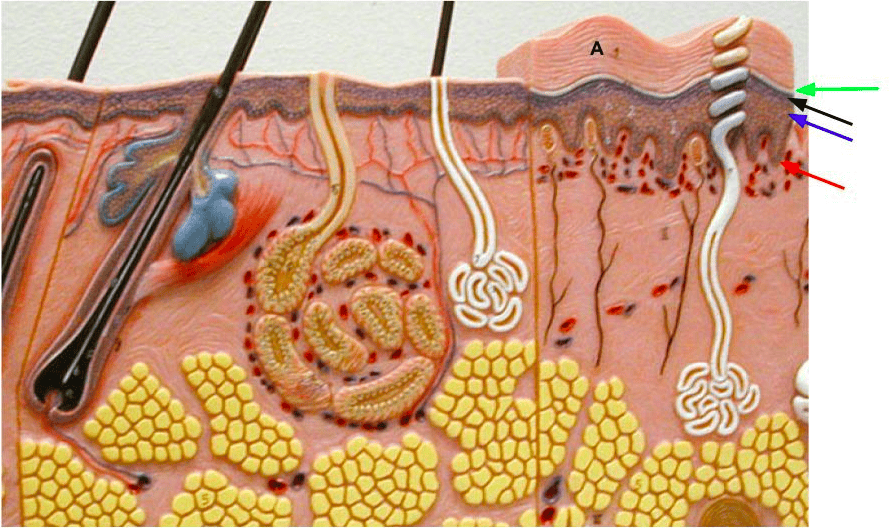 Identify the epidermal layer indicated by the letter A. | back 53 Stratum corneum |
front 54  Identify the epidermal layer indicated by the red arrow | back 54 Stratum basale |
front 55  Identify the epidermal layer indicated by the black arrow. | back 55 Stratum granulosum |
front 56  Identify the epidermal layer indicated by the blue arrow. | back 56 Stratum spinosum |
front 57  Identify the epidermal layer indicated by the green arrow. | back 57 Stratum lucidum |
front 58  Identify the epidermal layer that is absent in thin skin. | back 58 Stratum lucidum |
front 59 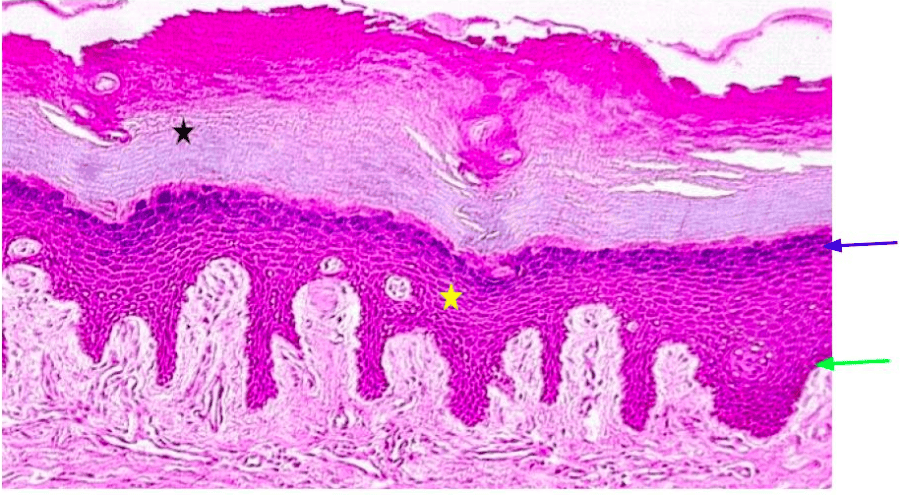 Identify the epidermal layer indicated by the black star. | back 59 Stratum corneum |
front 60  Identify the epidermal layer indicated by the green arrow. | back 60 Stratum Basale |
front 61  Identify the epidermal layer indicated by the blue arrow. | back 61 Stratum granulosum |
front 62  Identify the epidermal layer indicated by the yellow star | back 62 Stratum spinosum |
front 63 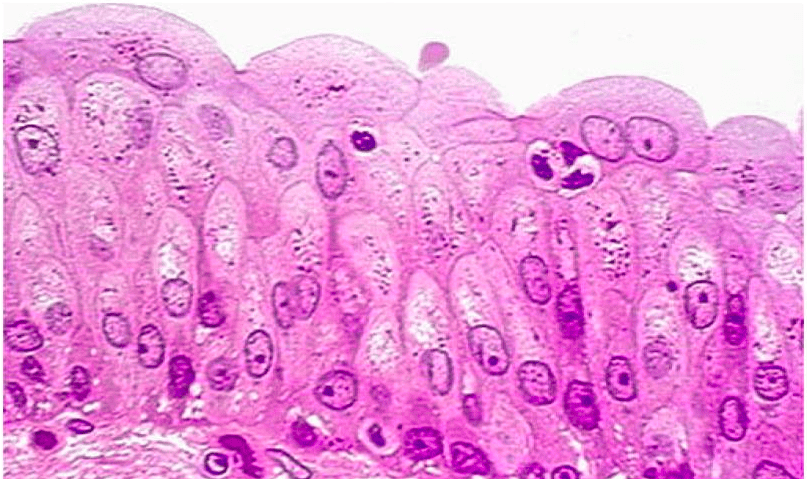 Identify the tissue | back 63 Transitional Epithelium |
front 64  What is awesome about the above tissue? | back 64 it can stretch alot |
front 65  What organ contains the above tissue? | back 65 urinary bladder |
front 66 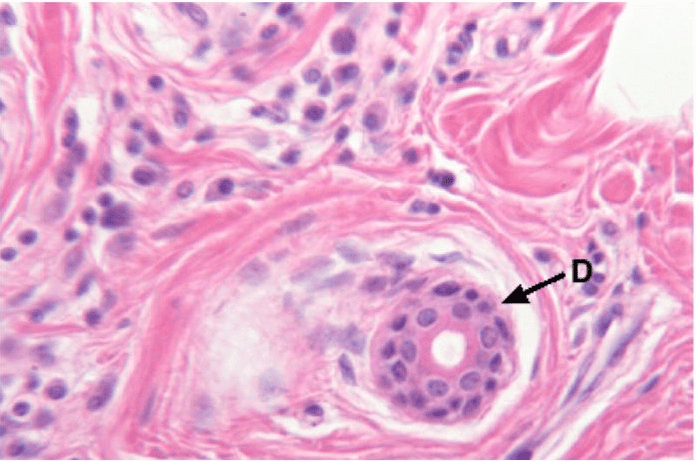 Identify the tissue indicated with the D. | back 66 Stratified Cuboidal Epithelium |
front 67  What organ is indicated with the D? | back 67 Duct of a sweat gland |